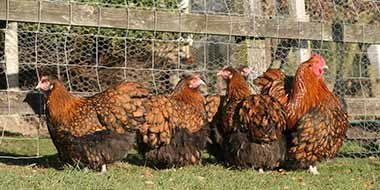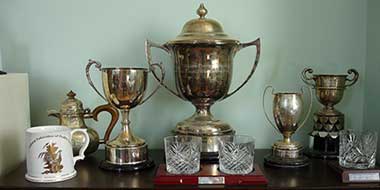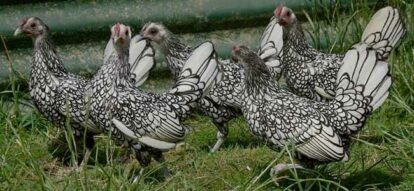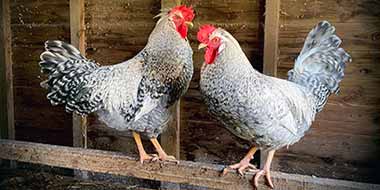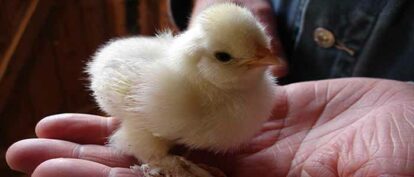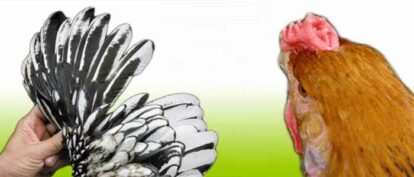The word ‘gene’ is enough to put many people off when it comes to poultry articles. However, let me assure you, I don’t intend to get technical; there will be no complex looking scientific symbols in this article for poultrykeeper – just the basics. The aim is for it to be a fun read!
When learning about poultry genetics, I felt great relief when realising that all fowl were naturally meant to be a combination of black and red colouring (red accounting from a host of tones from buff to mahogany). The most obvious example is the ‘believed’ ancestor of all poultry – the Red Jungle Fowl; the colour of which is seen in many breeds today: Welsummers, (Light) Brown Leghorns, Game Fowl and so forth.
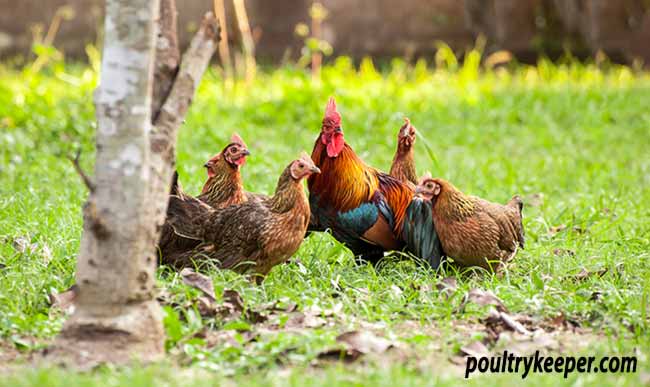 The most obvious example of Black and Red colouring and commonly accepted ancestor of domesticated chickens – the Red Jungle Fowl.
The most obvious example of Black and Red colouring and commonly accepted ancestor of domesticated chickens – the Red Jungle Fowl.
When one of these genes is prevented from fulfilling its purpose (restricted), it makes for quite a visual difference in the bird in question.
The gene we are focusing on here, is called ‘Dominant White’ and many people regard it as having the action of ‘turning black feathers into white ones.’ This thinking is almost correct. However, it would be more accurate to say: ‘The Dominant White gene restricts black pigment, and therefore the feathers are devoid of colour in certain areas and appear white.’
This makes for some fun and interesting patterns. It turns a Black-Red, or as called in the US, ‘Black-Breasted-Red’ male into a ‘Pile,’ and it turns a Black-Laced-Red Wyandotte into a White-Laced-Red. It also has the same action in the Poland breed where the outcome is called ‘Chamois.’
[Here is an example in Old English Game from Grant’s article “Poultry Plumage: How it begins…Black and Red Pigment” – Dominant white gene restricts black pigment so feathers have no colour and appear white. Ed.]
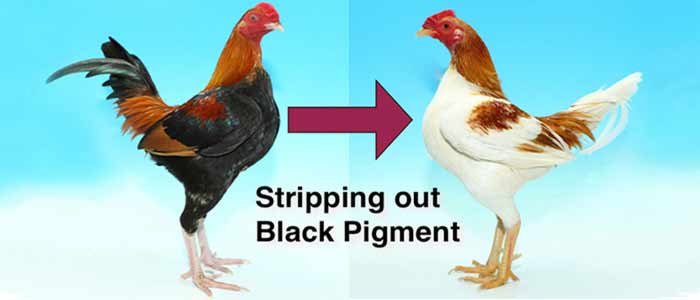
Photos of Old English Game courtesy of Ian Wileman.
Interestingly, the word ‘Chamois’ (depending on where you live) is also used to describe the colour found in only one breed at present – the Friesian Fowl.
There are many colours of Friesian in their native Holland, but relatively fewer in the UK and other countries. At present, it appears the distinct yellow and white colouring in the male, and transverse bars of the same colours in the female, are unique to the Friesian breed. In this case, the ‘Chamois’ appearance is created by the Dominant White gene’s presence in an otherwise (Gold) ‘Hamburgh-Pencilled’ fowl.
Since this effect was possible in Friesian Fowl, I wondered why no-one had so far attempted to add the Dominant White gene to British Partridge Wyandottes. What would the ‘usually-black’ pencilling look like if it was white, instead, on a gold background? Surely it would be attractive! The males would obviously appear as ‘Pile’ (very similar to Pile Game), but the females would be quite different.
I set about making this colour in Wyandotte bantams – I named it ‘White-Partridge’ and the effect was as I’d predicted – very attractive. Plus, the males could be shown as ‘Pile.’ I am lucky in that a few breeders have taken up the colour and are keeping them going. Breeding them isn’t difficult – to save them getting too ‘washy,’ breeders tend to cross ‘White-Partridge’ to Partridge and get 50% of each in the offspring.
This method of breeding isn’t new or unique to the Wyandotte. Many breeders use one or more birds with the Dominant White gene in the breeding pen (as long as the opposite sex doesn’t carry the same gene). Some examples would include: a Black- Breasted-Red male with Pile females (Game), a ‘White- Laced-Gold’ Orpington (UK) with ‘Black-Laced-Gold’ females etc.
Results are invariably half of each in the progeny and not sex-specific i.e. from a PIle Game rooster with Partridge females, half of the offspring would be Pile but they would be male and female, the same as would the Partridge (BBR).
It is possible to produce (or purchase) a true-breeding line of anything with Dominant White (Pile Game, White- Laced-Red Polish etc), but they generally aren’t as dark in the red areas as is desirable; not like the offspring from the pens where only one of the parents carries the Dominant White gene (for example – as mentioned, Pile x Partridge).

